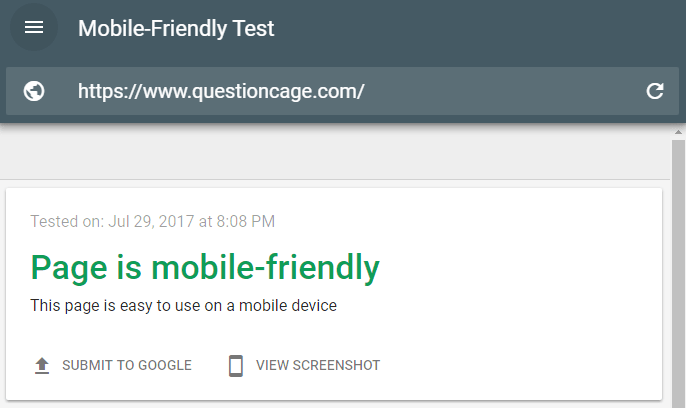Voice Search gave different direction and shape to the SEO industry. But at the same time, it makes more convenient for the users too.
No more typing at all! Sounds Great?
And this boom continues and growing since 2014 when the voice search Siri came into the limelight. And later on, we know how Google Now came into the business too with a bang.
Everyone from digital Marketers, SEO Experts and Entrepreneur are well versed, the impact could be done by the voice search on SEO.
The rise is unstoppable, and it’s quite wise that you start thinking of optimizing your blog for voice search.
And voice search tends to have some incredibly useful tools by 2020. And moreover, it’s predicted that 50 percent searches will be only the voice searches as of 2020.
So, this gets quite clear now, voice searches are not a temporary trend or choice. In fact, it is here to stay.
In this article, we take a look at how to optimize conversational voice searches so that you aren’t left trailing your rivals. The time to adapt to this accelerating trend is now, and here is how.

Understand user intent
This is important because Google looks for the intent behind a person’s search queries. If you understand why a user is asking the questions they’re asking, you can build related content of such high quality that Google will eventually recognize you as an authority and rank you highly. Maybe you aren’t spot-on with a keyword phrase, but if your content is related and valuable, your site flourishes.
How does this relate to voice search? If you understand conversational voice searches, you can understand more about who is behind a search, as well as why they’re searching.
For example, if I ask Google to “show me the best Black Friday deals on computers near me,” it says a lot about my intent. It says that I’m ready to make a purchase, but that I also want informational content that compares deals.
The more you know about conversational voice searches and user intent, the more you can create great content that is both keyword rich and offers enough value to the reader so that it satisfies Google. To understand more about user intent, check the related searches at the bottom of search results for a specific query. These give you an insight into the individual behind a search, including what they are really looking for.
Google loves the user more than anyone else and cares massively about matching them up with quality content. SEO matters, but understanding the user is more important.
Use Question Phrases in your Content
Generally, a human performs a voice search he/she start with the question. Integrating questions phrases in your content would deliver better results.
Saying question phrases means the keywords should start with, what, when, why, how, who etc.
Where can I find best leather shoe shop in Milan?
What is the best business to start in Porto?
How do I develop my programming skills in Sydney?
How to drive free traffic to your website?
And so on, choose the keywords according to your requirement and some question phrases by keeping a human physiology in mind.
User Intent
Understanding the user intent would be the key to voice search optimization.
Saying user intent means, we need to understand how a human(we all) finds a query.What do we do when we are looking for something on the web.
What do we do when we are looking for something on the web. What are the phrases we use to for a particular thing?
Generally, we speak more than we write on.
It’s more like a conversation searches. Just as we are talking to someone.
So it’s quite definite that there is no much scope for the two words or three words searches.
Basically, the focus should be more on the long tail keywords.
Long tail keywords will increase your pages chance more to be found on the search engines.
You can do a manual search on Google or any other search engine. And at the same time, Google Keyword Planner would be really helpful to find the relevant phrases.
Long tail is the name of the game
Picture it; you and your friends are eating dinner together when one of you has a fab idea – you should all go to Cancun for a vacation.
As you’re chatting about it, one of you opens up your phone and asks Google for the cheapest Cancun deals while having a sip of wine. Once you’ve got this information, you ask Alexa to book you a hotel:

How fun is this? Very.
Just like you talk to your friends, you can now also talk to your phone. And this is key to mastering voice search: you have to understand how humans talk to each other.
This has taken some of the onus away from keywords for online businesses as they seek to grapple with the rise of voice search. Keywords and algorithms still matter, but so too does natural human language. Ironically, as we enter 2018, it’s less about the rise of robots and more about the rise of humans.
Neil Patel recognized this a while ago when he told us to start thinking like humans again. Instead of focusing on short-tail keywords like “MacBook Pro,” you should start trying to second guess how your customers would frame a question related to your product, niche, or service via long tail keywords.
For example:
Best prices on used MacBook Pro
Long tail keywords have always mattered. They are essentially your best weapon for destroying your rivals. And now that the focus has shifted to voice search, long tail keywords are what will help you put some real distance between you and the competition.
Think of it like this: most voice searches are questions in the form of long tail keywords. This is how humans talk. We don’t coldly mumble “MacBook Pro” to each other. To outdo the competition, you need to pick the right long tail keywords that help you build better traction. To tighten your grip on voice search, you need to look for super-refined keywords, such as our example above and its variations, as per the image below.

The more queries you target related to a specific keyword, the more you can dominate your niche. People – though they’ll look perplexed if you tell them – talk using long tail keywords. It’s how we interact with one another, and it’s how we search the Internet.
Go longer with titles and descriptions
Things are getting longer on Google in a move that seems almost designed to anticipate the rise of voice search. What do I mean? I’m referring to Google increasing the width of search results.
In the past, title lengths were cut at 60, while description length per line was cut at around 80. Now, you can go long, with 70 characters for your title before Google truncates it with an ellipse and 100 characters per line for your description.
This all means that you can now employ natural long tail keywords in both your title tags and meta descriptions without worrying as much about being cut off with an ellipse. Since individuals who use voice search tend to ask questions, including queries in your title tags and answers in your meta descriptions can help you get more site visitors.

Moz are taking advantage of longer meta descriptions
Aim to rank on featured snippets

Not all search results include a featured snippet, but of the 1.4 million queries that Google tested, almost 30% do.
Featured snippets are a key part of SEO in general because they appear at the top of SERPs. If you can rank on featured snippets, you’re right in the face of your prospects. Now that voice search is emerging, featured snippets will matter more and more. Why? Because an individual’s mobile device reads out the top search result. If there is a featured snippet, this will be read out.
The key to ranking on featured snippets is answering questions with in-depth answers. Here are some example questions:
What are featured snippets?
How does blood sugar affect diabetes?
How do I invest in stocks and shares?
As we’ve already explained, these are long tail keyword phrases that people are asking into their phones. It’s then up to you to provide answers that explicitly include the conversational keyword phrase, before answering the question with in-depth content that the reader and Google will find valuable. The stronger your content is, the better chance you have of ranking on featured snippets.
To improve your chances of ranking, include the long tail keyword query at the start of the article, as well as in the URL and title.
Focus on local search results
It is observed that voice search mostly took place for the local searches.
So, if you are running a local business, through your website. Then there is no reason why you should not optimize your website according to voice search.
For instance, if you have started a Restaurant business, you should get found from the search engines as well.
If you have started a restaurant – Where can I find best Chinese restaurant in Munich
If you have a furniture shop – Where to buy genuine leather sofa in London
If you are running a travel Agency – How to reach Araku Valley from Seattle
And the list goes on and on, depends on your business. Proper Keyword research has a big role to play.
It becomes more like and Question and answers. As we can see in the above image, a user types “newly opened restaurants in Hyderabad.”.
The results are so informative and quick along with the address, the snapshot of the food, distance and display the contact details as well.
Isn’t it cool? All the information, in one snippet.
So the local business gets more conversions. Users hate to read all the stuff opening a link.
And it’s very obvious, who will do it if the results are so spontaneous and quick right from the first display.
The language needs to be natural, and it should relate to your local area while also matching – as closely as possible – your customers’ queries. Just remember to use phrases and words like the ones you yourself would use.
Of course, it isn’t always possible to anticipate exactly what your customers are asking via their device, which is why a Q&A section is well worth adding to your site. There, you can add a number of long tail keyword voice search queries while providing your customer with relevant, valuable answers. By doing this, you’re improving the odds of you hitting the bullseye with a long tail query used by your customers, and you’re also expanding your semantic core.

Mobile Friendliness

As smartphones introduced, the internet comes more into the picture. And at the same time, more and more people got addicted to it.
No one is there without an internet access, so it’s really important to make your blog or website completely mobile friendly. So, that the user could access it without any trouble.
Here are few of the statistics, that shows the actual angle of voice searches. Google research has already proved that 20% of the mobile queries are voice searches.
Generally, these days all the website developers prioritize it of developing a mobile-friendly website.
As there is no way out because Google to consider it as a ranking factor. And if you are still not sure about, whether your blog or website is mobile friendly or not.
Perform a quick mobile-friendly test, from an app by Google. This app will scan your website and show the results in few seconds.
____________________________________________________________________________________________
We provide the best quality backlinks as ever, pls contact us qualitybacklink.net@gmail.com ; Skype: qualitybacklink






